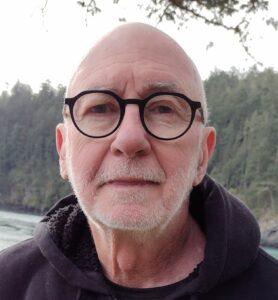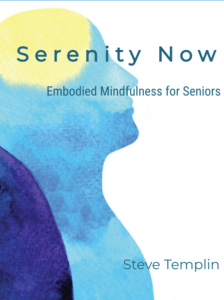Pain is almost always met with resistance. We tend to fear pain and do our best to create distance between ourselves and the painful experience.
When it comes to chronic pain, pain that’s lingered for three months or more, this reflexive need to resist pain is intuitive, yet counterproductive.
Research is showing that most chronic pain has a psychological component that’s actually hard-wired into the brain. The implication here is that most chronic pain would be treated more appropriately by focusing first on the brain and emotions.
Brain-Based Strategies for Resolving Chronic Pain
I’ll mention a few of the brain-based strategies for resolving chronic pain that I find effective and use most frequently, either separately or blended. All of these approaches share the common premise that chronic pain is more fluid, flexible, and changeable than commonly believed.
Just believing that these approaches can be a viable route to relief, just knowing that there’s an option beyond what we’ve been led to believe, opens a valuable therapeutic door. What follows is an introductory overview of these approaches.
Number One – John Sarno, M.D. was the modern pioneer in this field. I’ll be brief here because I’ve written so much about him previously. He discovered what worked best and what didn’t work so well when it came to treating chronic pain.
His research led him to understand that most chronic pain had emotional underpinnings and not structural causes, regardless of what the diagnostic imagery revealed. When his assessment ruled out physical causes he refused to treat the patient with physical interventions, but rather with a focus on emotions.
His focus was to help the patient with developing an awareness of their hidden emotions and with the new intellectual understanding that most chronic pain did not have a physical cause. His primary therapeutic tool was emotionally expressive writing. Through his clinical practice and his books, he helped thousands of individuals recover from chronic pain, even where medications, injections, and surgery had proved ineffective.
Over time more research has confirmed that most structural changes to the spine, such as arthritic changes or disc degeneration, rarely caused pain. More recent studies involving fMRI suggest that much chronic pain results from stress-induced changes in brain circuitry. Fortunately, these circuits can be changed through emotional awareness practices.
Number Two – Somatic Focusing puts even more emphasis on directly feeling emotional experience, rather than simply acknowledging or expressing emotions.
When we move into a sensory-based mode of experience, feeling and sensing bodily felt experience directly, the brain and nervous system change profoundly. Essentially the brain and nervous system begin to function in a more orderly or coherent way.
This new neurological order opens us to healing possibilities that are not available when we’re stuck in the default thinking mode. For example, tuning into and curiously feeling some degree of our pain (that we’re normally doing our best to avoid) can open us to insights and intuitions that ultimately lead to the lessening or even the complete resolution of pain.
Here’s a specific example of what I’m speaking about. Let’s say someone has chronic low back pain. They’re guided to notice their pain when it’s only mildly or moderately uncomfortable to avoid making this exercise too difficult or counter-productive.
They’re asked to curiously notice various qualities of their back pain. As they report that the pain is about the size and shape of a golf ball, but softer, and vibrating, and dark in color their nervous system is shifting gears and becoming more orderly.
What emerges next could be any form of memory, or feeling, or imagery, or intellectual insight that connects with and gives voice to the stored emotions that fuel the pain. This is an example of the body’s wisdom in action, if only given a chance.
The general idea is that we’ll have less stress-induced pain or other chronic complaints when we have less stored and ignored emotional experience to fuel the pain pathways. Somatic Focusing allows the body to reveal its hidden stories.
Number Three – Internal Family Systems (IFS) is a therapeutic approach that Richard Schwartz, Ph.D, discovered. The main premise here is that we’re all composed of multiple parts or sub-personalities. So, if I’m experiencing anger, it might be more accurate and helpful therapeutically to say that a part of me is angry, rather than identifying with the pain and saying that I am angry.
From this point of view, we could begin to address pain the way we did with Somatic Focusing. We could begin with enhancing our somatic awareness as we did earlier when we discovered our inner golf ball experience. But then from the IFS perspective, we take this inner connection a step further.
We could now begin to relate to our inner experience as if it was an intelligent part of us with its own thoughts and feelings that might be trying or willing to communicate with us. We could ask the pain a question, such as, ‘Is there something that you’d like me to know?’ and then sit back and be open to an answer.
What comes could be similar to the flow of relevant emotional experience that was initiated with Somatic Focusing. The difference here with IFS is that we’re actively dialoguing with our internal experience.
In my experience, these two processes are closely related. You can use the tool that works best for you in any given circumstance.
Number Four – Open Focus is another awareness-based process that was developed by neurofeedback pioneer Les Fehmi, Ph.D. He showed that when we notice sensations in the body, or more precisely when we notice the body as sensations experienced in bodily space, the brain changes dramatically and so does our potential for relief from physical or emotional pain.
Open Focus puts even more emphasis on how intimately we can notice bodily felt experience. Noticing our body as sensations or energy, as opposed to a physical thing, creates more neurological order and more potential for change. In Open Focus, we become aware of physical or emotional feelings as sensations experienced in bodily space.
Here’s an example of an Open Focus session. Let’s go back to our golf ball experience. The golf ball aspect of our pain was vibrating. Actually, everything vibrates. All tissue, cells. and molecules are composed of fields of vibrating atoms … that aren’t even material things. So now we’re using a perceptual mode, open focus, that allows the very nature of ‘things’ to become more fluid and changeable.
In this altered neurological state both physical pain and emotional pain become more fluid-like, more pliable, and ultimately more transformable.
All of the above orientations put an emphasis on sensing bodily felt experience directly, rather than thinking alone. There’s nothing innately wrong with thinking, but thinking can become dangerous when it’s divorced from the wisdom of the body.
Said another way, thinking works best when the whole brain is used, you know, both left and right hemispheres. These bodily-oriented processes appear to be more right-brain related and therefore bring balance to left hemisphere thinking. Whole brain thinking is probably an even better description.


 Steve is a retired Doctor of Oriental Medicine, Acupuncture Physician, and HeartMath Trauma-Sensitive Certified Practitioner with over 35 years of clinical experience in the fields of Energy Medicine, Energy Psychology, and Biofeedback.
Steve is a retired Doctor of Oriental Medicine, Acupuncture Physician, and HeartMath Trauma-Sensitive Certified Practitioner with over 35 years of clinical experience in the fields of Energy Medicine, Energy Psychology, and Biofeedback. 